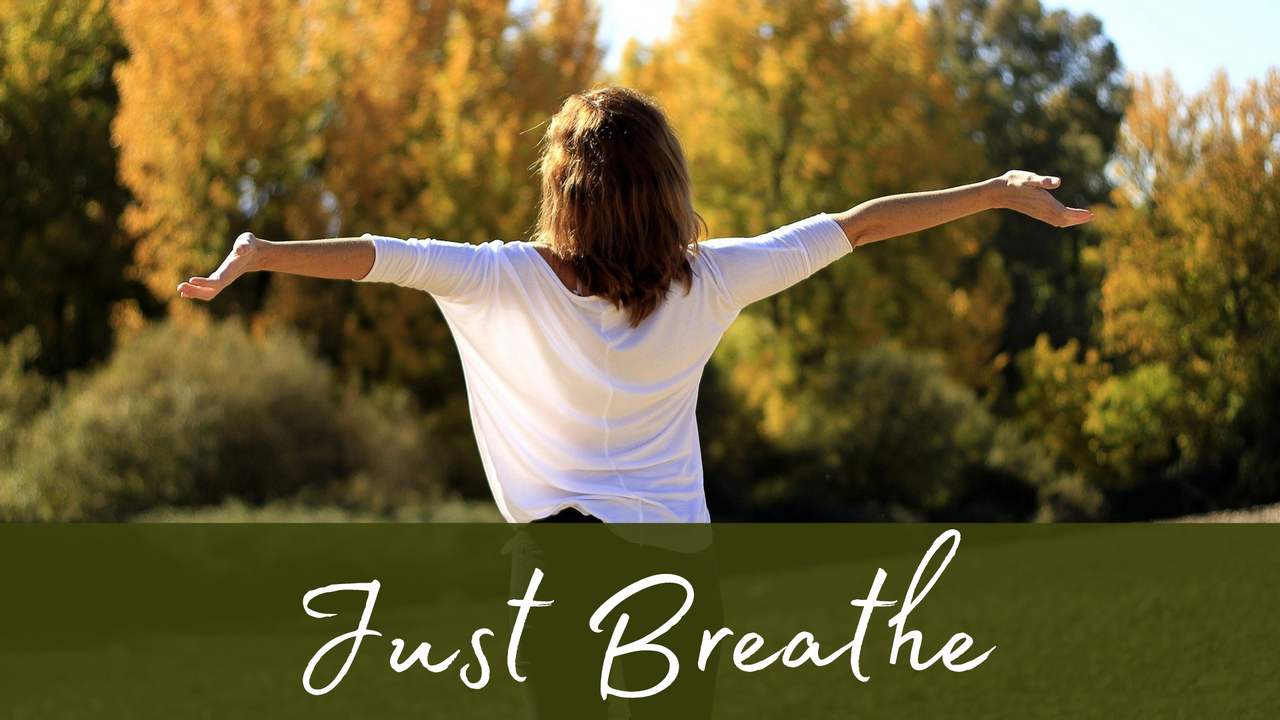Just Breathe

As I worked with two different clients this week, I realized something that I hadn’t thought about in a while. Both clients presented with very similar chronic pain patterns. And this week for some reason their pain seemed to be much worse than usual.
What if I could help them lower the activity of their ‘fight, flight or freeze’ response - the activity of their sympathetic nervous system?
While we spoke about their past few days, I realized that their pain was idiopathic - it had no particular cause. Neither person had changed their daily habits, nor had they altered their exercise routines.
Both clients spoke a mile a minute describing their pain and all the ways they tried to manage it: painkillers, food, naps, with and distractions like Netflix marathons and Sudoku. Nothing was working. All they could think about was their pain!
Was it getting worse? Is it feeling like it is traveling farther down their legs? What exercises would help? Can they take more pain medication? Maybe some sort of supplement? Should they see their chiropractors? Their naturopaths? WHAT!?
I decided to ask my clients to lie down on whatever surface they felt would be more comfortable. For one person this was the floor and for the other it was their bed.
Getting into position was visibly uncomfortable for both of them; they moved very slowly and gingerly. They held their breaths until they were horizontal. One wanted their legs bent, the other asked if it was wrong if they wanted their legs straight.
I asked them to close their eyes and give me five minutes to try a few things we hadn’t yet tried together. I guided them through a progressive relaxation exercise whereby I spoke to them softly and asked them to slowly relax various areas of their body.
We then focused on their breathing. Tongues resting gently on the roof of their mouths, mouths closed and breathing gently through their noses. I saw their faces relax and I heard sighs.
Next I asked my clients to once again feel different areas of the body where tension is often stored - the jaw, the neck, shoulders and chest, the belly, the hips … and then I returned their attention to their breathing.
I coached them to smooth their breath so that the transitions from ‘in’ breath to ‘out’ breath were gentle. I invited them to imagine their breath following a shape; an ellipse, a figure eight, or a waveform, perhaps.
Now check that their in breath and out breath were about even in length.
The next step was to lengthen their out breath by just a second or two before they began their in breath once again.
The final step was to allow the breath to return to a smooth and even cadence.
As I worked with each client, I held them at each stage or exercise for about two minutes. Have you ever concentrated on something for two minutes? It really is a long time! For these two clients, it was likely the longest they were able to focus on one task in quite some time.
My clients needed guidance, reassurance and the structure that I provided in our sessions in order to follow the breathing sequence and not change their focus away from their body and their breath.
This was certainly unique for these clients - they had been trying NOT to feel, and NOT to experience what their bodies were trying to tell them.
After just five minutes, I encouraged each client to open their eyes. Their faces looked much different from what they had just five minutes earlier. I asked them about their pain. Both looked surprised for a moment and then told me they had no pain. None.
While I wish this pain could be removed and never return, I knew this was not to be. However, to become aware of what our bodies are trying to tell us is often the first step to pain relief.
Both of these clients acknowledged that they were continually ‘pushing’ against their bodies, trying to do more and not less. When I explained that our nervous systems rather than musculoskeletal systems were often the source of our pain, they looked quite doubtful.
Why did they feel pain here, here and here then? Over this muscle and that muscle? What these clients didn’t know, though, is that muscles don’t have pain receptors - none at all. They are not able to provide signals for pain. So why did they feel what they felt? When we calm our nervous systems - and there are many ways to do this, as you might realize - our pain levels often decrease.
To tune into our bodies - to give our nervous systems a break - may be just what we need to improve the powers of our immune systems, lessen our anxiety and help us regain a sense of control over ourselves.
Once my clients understood that they are in control of their bodies and could manage to modulate their pain levels on their own, then I would be able to show them movements that would help them feel better and become stronger, so their pain levels would be slowly reduced over time.
Sometimes we just need to take a breath.
Become a Guest Blogger!
We are now accepting applications for new Guest Bloggers! We encourage our fellow bloggers or aspiring bloggers to share their knowledge with the First Line Education community! If interested, please click the link below.


